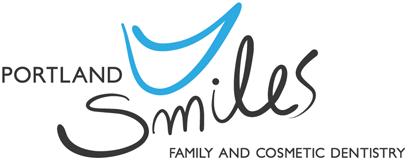Do you want straight teeth without a mouth full of metal? Invisalign is a series of clear trays that are custom fit to your teeth and are worn for two week increments. Invisalign treats a wide variety of malocclusions like spacing, crowding, orthodontic relapse and more! They are comfortable, easy to talk with and barely noticeable. Invisalign does not use metal wires or brackets to move your teeth. Thus, trauma and cuts to your lips and cheek from the metal are avoided. Tooth colored bonding called “buttons” are used as anchors. Using the buttons, the clear trays will gradually move your teeth into the correct position. The trays are worn for at least 22 hours a day. They can easily be removed prior to eating and brushing. Also, it is advised to remove the trays when drinking anything hot or anything that would stain a white shirt to avoid distortion or discoloring. It is simple as calling your local Invisalign provider for a consult. The dentist will complete a comprehensive evaluation of your teeth, gums and bite. If you think Invisalign may be the solution for you, Call Dr. Kathryn Buss for your free Invisalign consult today! For more...
How can I understand my dental insurance?
Dental Insurance can be very confusing to understand so let’s try and simplify: Annual Maximum- Insurances will contribute up to a certain amount on the total dental cost per year (on average $1000-2500 depending on the specific plan). Coverage- Insurances will pay a certain percentage (usually 50-80%) for treatment completed. The patient will be responsible for the remaining percentage even if your annual maximum has not been met. Deductibles- An initial annual fee (deductible) required prior to insurance contributing to the expense of dental treatment. Example: Negotiated Crown price $1250 with a $50 deductible Initial patient responsibility is $50 Insurance pays 50% of $1200 (Initial cost minus deductible) = $600 Patients portion is $600 Total Patient Responsibility would be $650 In-Network vs. Out-of-Network In-Network Dental Providers have lower negotiated fees determined by the insurance company. The insurance company will pay a percentage on those fees. Example Insurance fee for a crown is $1200, with 50% coverage Insurance pays $600 Patients responsibility is $600 Out-of-Network Providers use non-negotiated office fees. The insurance company will only cover the percentage of the insurance fees they have set. Thus the patient portion is usually higher Example: Non-negotiated office fee for a crown...
How Does Straightening My Teeth Help My Smile?
Of course your smile will look great once it is straightened and perfectly aligned. But, there are many more benefits to having a properly aligned smile. Less stress on your teeth and jaw. Your teeth are designed to take over 200 pounds of pressure on a daily basis. When teeth are not properly aligned those forces are not correctly distributed, and may increase the chance of breaking or wearing down teeth. Having teeth in the correct position may also reduce the strain in jaw muscles, assist in speech and reduce chewing complications as well. Improvement in gum health and periodontal health. Gums are often swollen and red around misaligned teeth because crooked teeth are much harder to clean. Overlapped areas and poorly angled teeth trap more plaque. Accumulation of plaque leads to a higher incidence of caries and gum disease. When teeth are correctly aligned, the gums properly fit around teeth and bone reducing the risk for periodontal disease. Improved Overall Health. A beautiful smile is not only a confidence booster, but healthy teeth are directly linked to your overall health. Oral infections, including periodontal disease and caries can lead to other serious health conditions like diabetes, heart disease, stroke and...
Does My Child Need Sealants?
Yes, your child should have sealants if deep grooves or fissures are present on their back teeth. The CDC reports: Dental cavities are the most common chronic disease in children ages 5-17 years- four times as common as asthma 50% of children have dental decay by age 11 Sealants are a protective barrier that a dental professional will use to fill in the small pits and grooves in your child’s teeth, and are a simple solution to help lower the risk of cavities. How to prevent decay: 1. Avoid sugary drinks like soda and sports beverages 2. Choose healthy snacks like cheese, carrots or celery 3. Brush twice a day with fluoride toothpaste (if child is able to spit out toothpaste) 4. Floss once daily to help clean in between teeth 5. Place sealants on healthy molars to prevent food getting caught on the chewing surfaces Sealants are very easy to place and only take a few minutes of your time; this could even be done at your child’s next dental cleaning. If you have any questions or concerns about sealants, ask your dental professional at your next appointment. Call Dr. Kathryn Buss at Portland Smiles...
